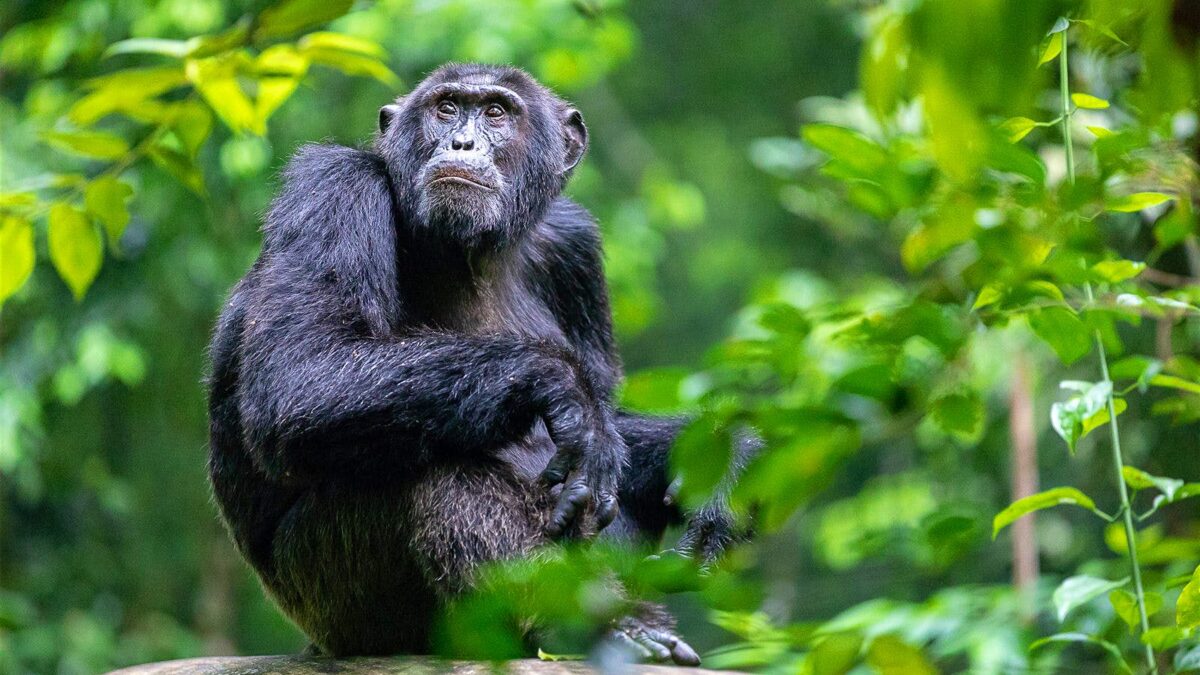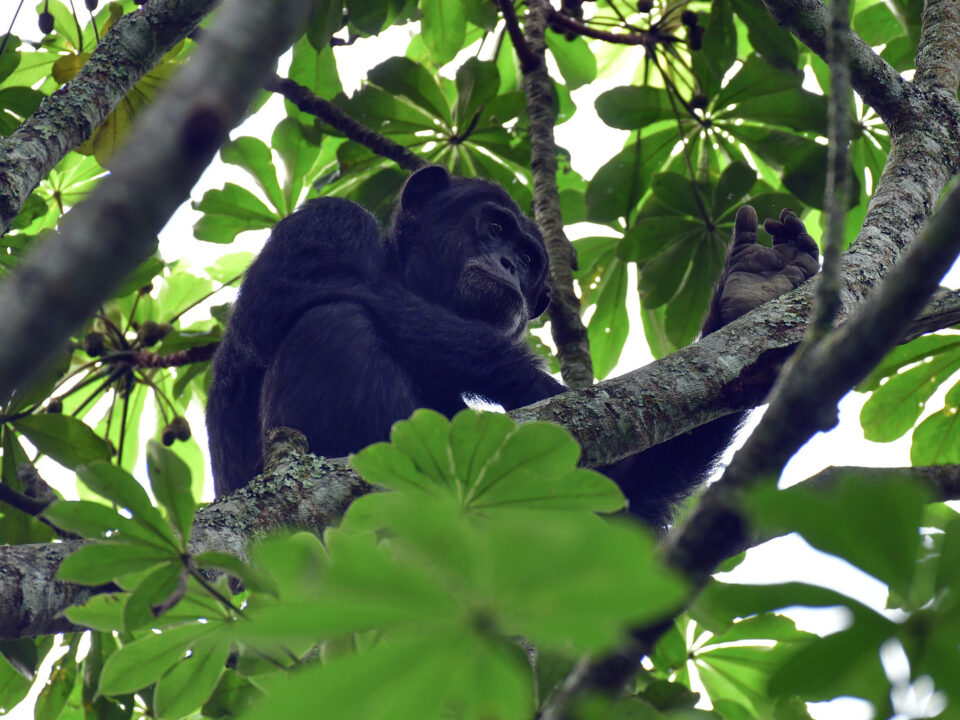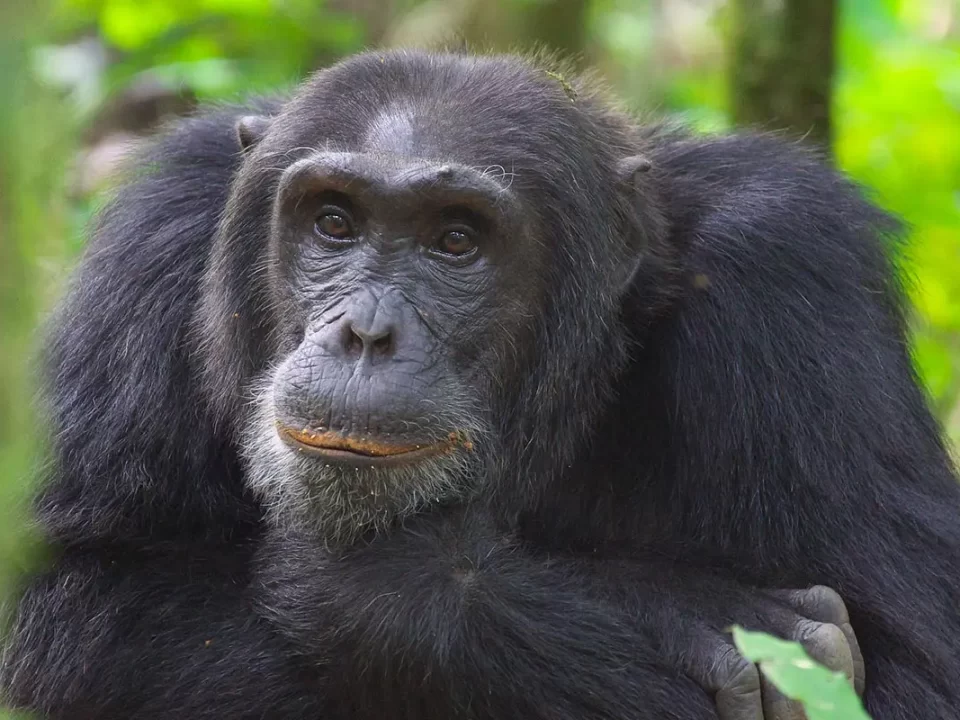Chimpanzee Close Up at Entebbe UWEC Zoo

Visit Gaddafi National Mosque Old Kampala
September 4, 2023
Best Time for Gorilla Trekking in Uganda
September 4, 2023Get Up Close with Chimpanzees at Entebbe UWEC Zoo – Uganda Wildlife Education Centre
Experience a Unique Encounter with Chimpanzees
Imagine meeting your closest relatives, chimpanzees, face to face without any barriers separating you. Well, that dream can come true at the Entebbe UWEC Zoo. With valid health proof, you can participate in the incredible chimpanzee integration experience. Accompanied by a knowledgeable keeper, you’ll embark on a walk around the island moat.
As you observe these magnificent creatures living life to the fullest in the trees, you’ll witness their learning process and adaptation as they coexist in a forest-like environment. The primary goal is to assist newly rescued chimpanzees in gradually building confidence and trust in other chimpanzees, who will eventually become their long-term allies. Integration is a continuous, long-term process carefully managed by our dedicated keepers. We’re thrilled to share this remarkable experience with you and offer you an hour of unforgettable moments in a controlled environment.
During your visit, you’ll also have the opportunity to engage with a chimp caregiver. They’ll share stories about each chimpanzee’s history, how they came to the center, their behavior, and the challenges they’ve overcome. Get ready to be groomed by playful chimp infants, and in return, offer them a grooming session or a warm embrace.
Chimpanzees can be quite spirited and occasionally boisterous. Your guide will help you interpret their various sounds and gestures and provide valuable advice on how to interact appropriately with your primate cousins.
Picture This
Picture a chimpanzee holding a cup of porridge, peeling a banana, or playfully requesting more food! All this and much more awaits you during this unique, once-in-a-lifetime experience.
Contribute and Make a Difference
By participating in this incredible experience, you’re not only immersing yourself in the world of chimpanzees but also contributing to their welfare. A contribution of $290 ensures that you’ve played a vital role in maintaining these remarkable creatures and safeguarding their counterparts in the wild.
Dates and Timing
This activity is available year-round, from Monday to Sunday. The adventure begins early in the morning at 7:30 am with a brief introduction by one of our dedicated keepers.
Reservation and Health Requirements
To ensure the well-being of both humans and chimpanzees, prior reservation and health clearance are essential. Our chimpanzees undergo regular health checks and receive updated vaccinations, all in an effort to prevent the transmission of diseases.
Explore Mabamba Swamp in Uganda
Mabamba Swamp, situated in Uganda, is a premier wetland birding site celebrated for the presence of the endangered Shoebill stork, a highly sought-after bird species by birdwatchers and nature enthusiasts. Covering an impressive 2,424 hectares, Mabamba Swamp is characterized by dense marshes of papyrus, water lilies, and other wetland grasses.
This Ramsar site and Important Bird Area (IBA) is home to over 300 bird species, including several globally threatened species. Notably, seven of Uganda’s twelve Lake Victoria biome restricted species can be found here, with the Papyrus Gonolek being a standout. Additionally, the swamp welcomes large flocks of Palearctic migrants annually from October to March.
Getting to Mabamba Swamp
Mabamba Swamp can be reached via multiple routes. If you’re coming from Kampala or Entebbe, the most convenient route is through the Nakiwogo landing site in Entebbe. From there, a 10-minute ferry ride to Kasanje landing is followed by a 20-minute drive to Mabamba, offering picturesque views of cultivation and open fields along the way. Birdwatching in Mabamba Swamp is conducted aboard motorized wooden boats, navigating a labyrinth of trails through the dense marshes.
The Shoebill Stork and Local Fishermen
Mabamba Swamp’s rich supply of lungfish, a favorite food of the Shoebill, historically led to conflicts with local fishermen. Fishermen believed that encountering a Shoebill, locally known as ‘Bulwe,’ brought bad luck and a poor catch. This superstition led to the hunting and killing of Shoebills, endangering their population in the wetland.
The designation of Mabamba Swamp as a Ramsar site in 2006 offered some protection to the Shoebill. However, it was birdwatching that truly transformed the mindset of the local fishermen and community. Fishermen began renting out their boats to birdwatchers, generating income. Some even became trained birding guides. Today, fishermen actively protect the Shoebills and ensure they are not disturbed while fishing, sharing information with tourists on where to spot these magnificent birds. Approximately 12 Shoebills are said to reside in Mabamba Swamp.
Best Time to Spot the Shoebill
For the best chance to observe the Shoebill in Mabamba Swamp, plan an early morning visit, around 7 am, before fishing activity increases.
Other Bird Species in Mabamba Wetland
Apart from the iconic Shoebill, Mabamba Swamp hosts a diverse array of bird species, making it a birdwatcher’s paradise. Some notable species you may encounter include the African Fire finch, African Fish Eagle, African Green Pigeon, African Hoopoe, African Jacana, African Marsh Harrier, African Pigmy Goose, Black Crake, Black Heron, Black-crowned Night Heron, Black-crowned Waxbill, Black-headed Heron, Black-winged Stilt, Blue Swallow, Blue-cheeked Bee-eater, and Brown Parrot, among others.
Best Time to Visit Mabamba Swamp
Mabamba Swamp is accessible throughout the year. However, the dry months, particularly June to September and December to February, are highly recommended. During these periods, lower water levels provide better feeding opportunities, and the shorter grass makes birdwatching more accessible.
What to Pack for Your Mabamba Swamp Tour
As the tour involves an open canoe boat ride, it’s advisable to pack essentials such as sunscreen, a rain jacket, a hat, drinking water, a rain-protective camera cover (in case of rain), spare batteries, and comfortable clothing. Contact Trek Africa Expeditions to arrange your boat trip to search for the Shoebill stork in Mabamba Swamp, Uganda.
Discover the Wonders of Nature and Culture in Uganda with Trek Africa Expeditions!




